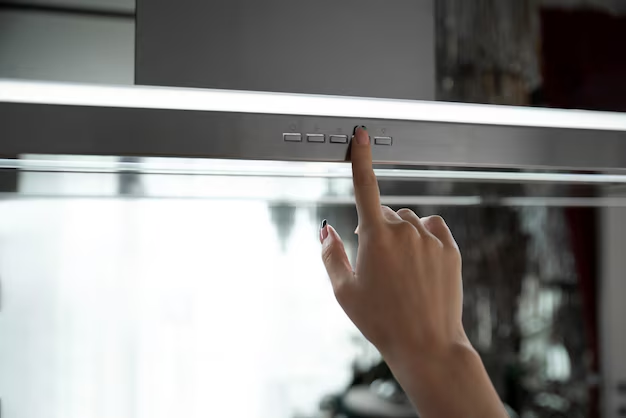How Long Does It Really Take for a Refrigerator to Get Cold?
When you plug in a new refrigerator or reset an old one, the waiting game begins. The anticipation of filling it with fresh groceries can often lead to a pressing question: how long should it take for a refrigerator to get cold? Understanding this process helps to manage expectations and prevent unnecessary anxiety over what is often a normal occurrence. In this article, we'll explore several factors that can influence cooling times, provide practical tips for optimizing efficiency, and discuss related topics to help you make the most of your appliance.
🕒 Factors Influencing Refrigerator Cooling Time
When your expectations meet reality, temperature variation in refrigerators can be a result of several factors.
1. Type and Size of the Refrigerator
Refrigerators come in various sizes and styles, each impacting how quickly they reach optimal temperature:
- Mini/Compact Fridges: Often reach the desired temperature faster due to less internal volume.
- Top-Freezer Models: Typically achieve cooling quicker than bottom-freezer models.
- French Door or Large Capacity Refrigerators: May take longer given the larger space to cool.
2. Initial Temperature Setting
The starting point matters. A refrigerator set to a higher initial temperature will inevitably take longer to cool down compared to one that begins at a lower setting.
3. Ambient Room Temperature
A warm kitchen can extend the time it takes for a fridge to reach operational temperatures. Refrigerators are designed to work optimally within specific ambient temperature ranges. Exceeding these can delay cooling efforts.
4. Contents Inside the Fridge
An empty fridge cools faster than a packed one due to fewer items that need cooling. However, once cooled, a full fridge tends to maintain temperature efficiently.
5. Cooling Technology
Modern refrigerators with advanced cooling systems or fans might achieve optimal temperatures more quickly. Conversely, older models without these technologies may require more time.
📈 Understanding the Cooling Process
Grasping the subtle details of how a refrigerator cools can help you recognize normal operation versus the need for service.
1. Refrigeration Cycle Basics
The refrigerator's internal system works by removing heat, not adding cold. This process is accomplished through:
- Compressor: Compresses refrigerant and circulates it through the coils.
- Evaporator and Condenser Coils: Transfer heat from the interior to the exterior.
- Refrigerant: Absorbs and releases heat as it circulates.
2. Time Frame for Different Situations
Here is a rough guide to expected cooling times under varying conditions:
- Brand-new fridge: Can take up to 24 hours to reach stable operating temperature.
- Fridge turned off (for cleaning or repair): Typically requires 4 to 6 hours to cool down.
- Warm groceries added: Recovery time could be prolonged, often taking several hours.
🧊 Optimizing Refrigerator Cool-Down Time
Efficiency tips can enhance your refrigerator’s performance and expedite the cooling phase:
1. Pre-cool Strategy
- Turn it on several hours before use: Especially if you're expecting company or a large grocery load.
2. Proper Food Arrangement
- Leave space between items: For proper air circulation.
3. Minimal Door Openings
- Limiting Door Use: Helps maintain cool temperatures.
4. Regular Maintenance
- Clean coils and seals frequently: To ensure efficiency.
- Check and adjust thermostat settings: According to seasonal changes.
🌡️ Related Temperature & Settings Insights
Exploring adjacent topics can provide you with broader insights.
1. Ideal Refrigerator Temperature Settings
- Refrigerator compartment: Optimal at approximately 37°F (3°C).
- Freezer compartment: Best kept at 0°F (-18°C).
2. Recognizing Symptoms of Malfunction
- Unexpected Warmth: Consistently high temps could signal issues like a malfunctioning thermostat.
- Unusual Noise: Could indicate a failing compressor or fan.
If any of these symptoms persist, it may be time to consult a professional.
3. Energy Efficiency Considerations
The cooling time is not only about immediate convenience but also affects energy consumption. An efficient refrigerator reduces electricity bills and environmental impact.
📋 Quick Tips for Refrigerator Setup
Here’s a handy summary for setting up your new or reset refrigerator efficiently:
- 🚦 Allow 24 hours for full cool-down if it’s brand new.
- ✅ Pre-set the thermostat to manufacturer-recommended levels.
- 🚪 Avoid frequent door openings and pack contents strategically.
Bringing It All Together
Understanding how long a refrigerator should take to cool and the influencing factors helps manage expectations and fosters efficiency. Whether setting up a new appliance or ensuring optimal performance from your current model, following best practices will lead to a more satisfactory experience. Remember to consider factors like fridge type, ambient temperature, and contents when evaluating cooling times. Moreover, staying tuned to related insights such as appropriate temperature settings and energy efficiency can enhance your appliance’s lifespan and functionality.
Your refrigerator is more than just a modern convenience; it plays a crucial role in your household's daily rhythm. With the right knowledge and practices, you can ensure this indispensable appliance runs smoothly and efficiently.
